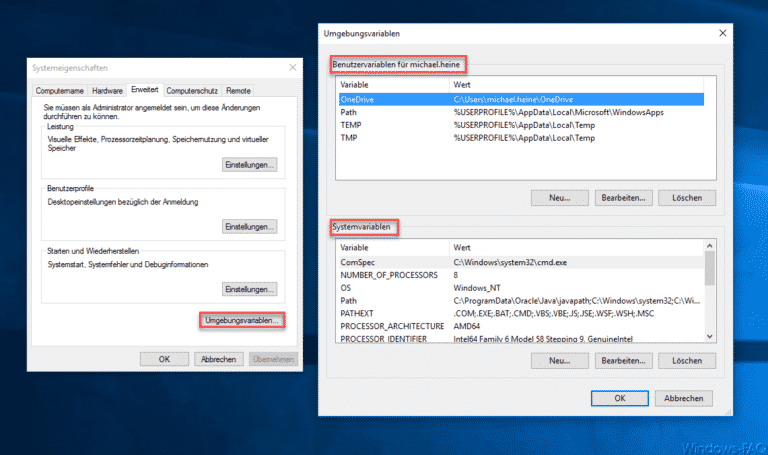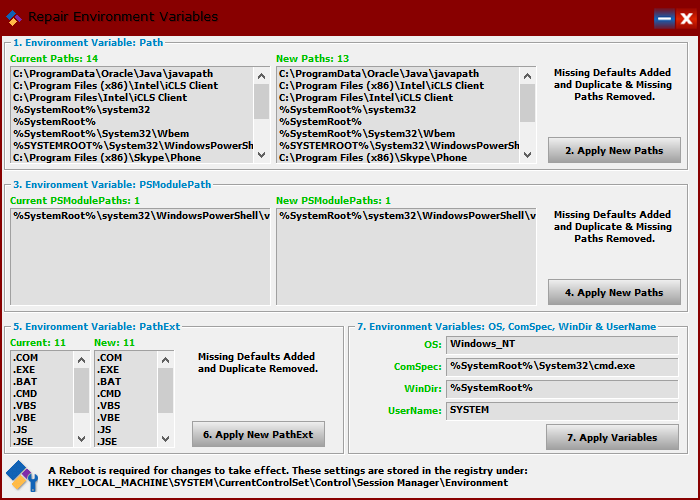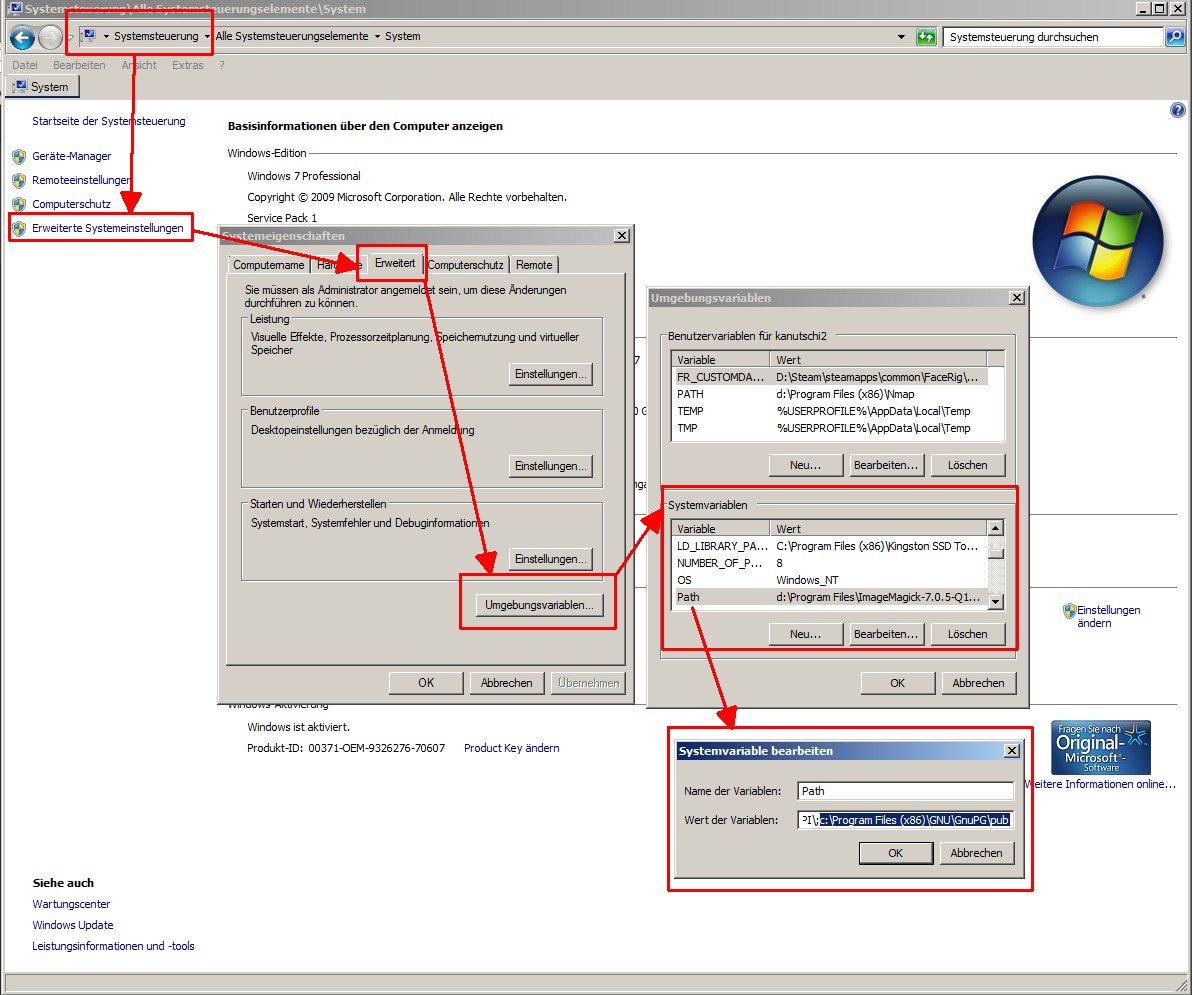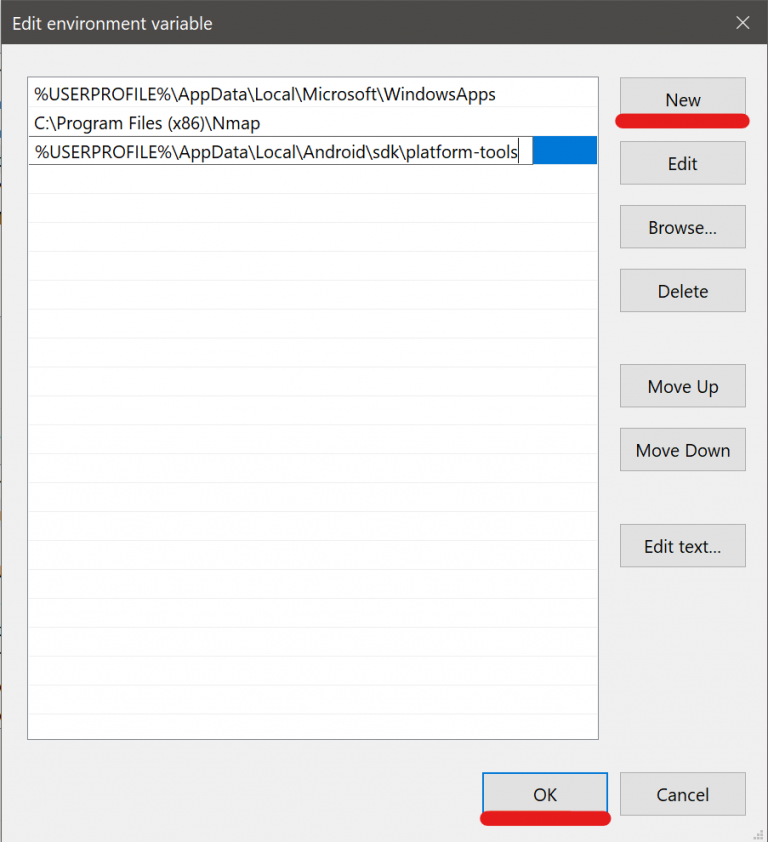Table of Content
%PATH% (supported since DOS 2.0)This variable contains a semicolon-delimited list of directories in which the command interpreter will search for executable files. Equivalent to the Unix $PATH variable (but some DOS and Windows applications also use the list to search for data files similar to $LD_LIBRARY_PATH on Unix-like systems). It is usually changed via the PATH (or PATH /E under MS-DOS 6.0) command, which also ensures that the directory names are converted into uppercase. Some DOS software actually expects the names to be stored in uppercase and the length of the list not to exceed 123 characters, therefore the variable should better not be modified via the SET command. Long filenames containing spaces or other special characters must not be quoted (").
%ERRORLVL%In DR-DOS 7.02 and higher, this pseudo-variable returns the last error level in a 3-digit format with leading zeros, f.e. Under Multiuser DOS, this is a true environment variable automatically updated by the shell to the return code of exiting programs. See also the related pseudo-variable %ERRORLEVEL% under DR-DOS and the IF ERRORLEVEL command. In Unix shells, variables may be assigned without the export keyword.
How do I change the PATH variable in Windows 10?
Include your email address to get a message when this question is answered. Social login does not work in incognito and private browsers. Please log in with your username or email to continue. I don't see how this answer adds anything over Alex's.

If one tries to unset a read-only variable, the unset command will print an error message and return a non-zero exit code. A few simple principles govern how environment variables achieve their effect. PATH variables are specified as a list of one or more directory names separated by semicolon (;) characters . Sometimes you may need to create a new environment variable, so for that, follow steps 1 to 4. Using the environment variable in File Explorer is not hard. First, open the File Explorer by clicking on the taskbar icon or by pressing the keyboard shortcut Win + E.
Add Directories to PATH Variable
To view and set the path in MS-DOS and the Windows command line, use the path command. Keep in mind that as you install programs, the path is updated with the paths for the newly installed programs. So, if you have erased your path after installing other programs, those programs may be affected. To view and set the path through the Windows command line, use the path command. The Windows PATH can improve your productivity when working on the command prompt. The @PathVariable annotation is used to extract the value from the URI.
%$LENGTH%Used by DOS Plus to define the screen length of the console in lines. See also the related environment variables %$WIDTH% and %DIRSIZE% as well as the similar pseudo-variable %_ROWS%. %DIRCMD% (supported since MS-DOS 5.0 and PC DOS 5.0, also supported by ROM-DOS)Allows a user to specify customized default parameters for the DIR command, including file specifications.
Set ORACLE_HOME environment variable on Windows
The PATH variable must include the address of any new program on your computer that you want to start through the command-line interface. As part of the process, Windows looks for the address for a certain command. When you send a command from the command line, Windows initially searches for it in the current directory.

Setting the path and environment variables differs depending on the Windows operating system version on your computer. Select a link below for your version of Windows and follow the steps. %SECOND%This pseudo-variable returns the seconds of the current time in a 2-digit format with leading zeros, f.e. It resembles an identically named identifier variable in Novell NetWare login scripts. %MINUTE%This pseudo-variable returns the minutes of the current time in a 2-digit format with leading zeros, f.e "00".."59". %HOUR24%This pseudo-variable returns the hours of the current time in 24-hour format in a 2-digit format with leading zeros, f.e.
Using the environment variable also gives the user the possibility to point to another directory. The SET command without any arguments displays all environment variables along with their values; SET "0 or more spaces" shows the internal ones too. In CMD.EXE, it is possible to assign local variables that do not leak outside using the SETLOCAL command. The command env displays all environment variables and their values. The command printenv can also be used to print a single variable by giving that variable name as the sole argument to the command.
If defined, it overrides the system's current SwitChar setting. The only accepted characters are "/" , "-" and "[" (CP/M style). See also the related CONFIG.SYS directive SWITCHAR (to set the system's SwitChar setting) and the %/% system information variable in some issues of DR-DOS COMMAND.COM . $HOMEContains the location of the user's home directory. Although the current user's home directory can also be found out through the C-functions getpwuid and getuid, $HOME is often used for convenience in various shell scripts .
Then head over to our favorite Windows registry hacks. Or for something a little lighter, check out our list of the best Windows 10 themes. In the right-side pane, double-click the entry called “LongPathsEnabled”, then change the “Value data” value from 0 to 1. So PATH-changing enthusiasts beware that the limit is 260 characters. Under System variables, scroll to find the Path Variable.

Of the different kinds of Windows environment variables, one that plays an important role—and impacts the way programs and commands get executed—is the PATH environment variable. Environment variables - Environment variables are mainly used within batch files, they can be created, modified and deleted for a session using the SET command. Administrator privileges are required to modify the path and environment variables. In the section System Variables find the PATH environment variable and select it.
Environment variables are most commonly used in the Run dialog box. Open the Run dialog box by pressing the keyboard shortcut Win + R, type the environment variable, and press Enter. As soon as you press the button, the folder will open. If you’re a coder or programmer, you probably spend a decent amount of time using the command prompt to execute programs or compile code.
%NEWFILE%This variable is automatically set to the first parameter given to the CONFIG.SYS directive NEWFILE. %LANGSPEC% (supported since MS-DOS 7.0)This variable is supported by some tools to switch the locale for messages in multilingual issues. %LANG% (supported since MS-DOS 7.0)This variable is supported by some tools to switch the locale for messages in multilingual issues. $LIBPATH or $SHLIB_PATHAlternatives to $LD_LIBRARY_PATH typically used on older Unix versions.
It is most suitable for the RESTful web service where the URL contains some value. Spring MVC allows us to use multiple @PathVariable annotations in the same method. A path variable is a critical part of creating rest resources. In the System Properties window, choose the Advanced tab. 4DOS and MS-DOS 7.0 set the length to 127 and insert ASCII-13 at this position, but Borland libraries set the length to the invalid value of 128 and do not insert an ASCII-13. For shorter command lines, 4DOS/NDOS and DR-DOS also insert an ASCII-0 after the ASCII-13, but not when invoked vis INSTALL directive; MS-DOS doesn't.


No comments:
Post a Comment